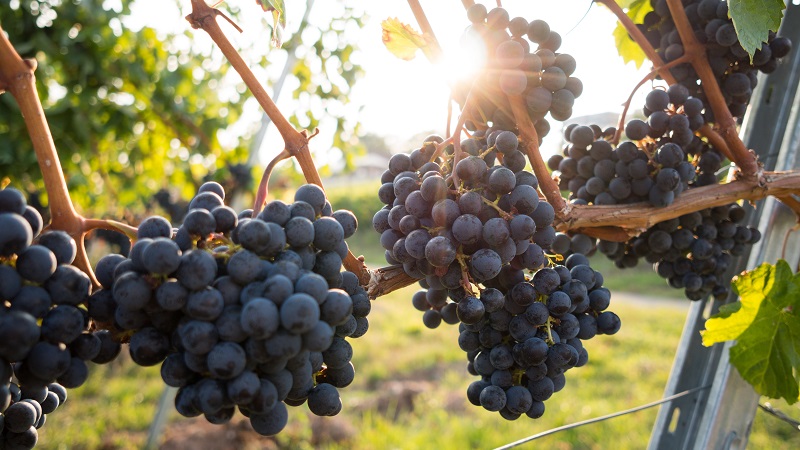Center for Produce Safety Awards $3 million To 16 Projects
The Center for Produce Safety (CPS) at the University of California, Davis, announced last week 16 new grant awards valued at $3 million. The research awards are directed at answering critical questions in specific areas of food safety practices for fruit, vegetable and tree nut production; preharvest, harvest and postharvest handling; and co-management of food safety and the environment. The objective is to provide the produce industry with practical, translatable research data that can be used at all levels of the supply chain.
The broad range of the projects reflects the commitment of CPS’s Partners in Research (PIR), a cross section of public and private partners. Contributing partners for these projects are: California Department of Food and Agriculture, California Cantaloupe Advisory Board, California Melon Research Board, California Leafy Greens Research Program, Western Center for Food Safety, California Pistachio Research Board, and the CPS Campaign for Research.
“We’re very encouraged and excited about this round of funded research projects. The research being conducted at CPS is relevant to all points of the supply chain: farmers, shippers, handlers, and consumers. The goal for CPS, and our contributing Partners in Research, is to keep fresh produce safe for everyone,” said Stephen Patricio, chairman for the CPS Board of Directors. “Each year submissions to the RFP grow. I encourage industry stakeholders to continue their support of the Center for Produce Safety research programs.”
The CPS Technical Committee reviewed 55 proposals, the highest number of proposals received since the initial RFP (request for proposals) in 2008. The CPS Technical Committee is an advisory group that includes experts from industry, academia, government, and non-governmental organizations. In collaboration with technical experts from PIR organizations, the CPS Technical Committee recommended sixteen proposals for funding. Research work on these projects will begin in January 2014.
2013 RFP Grant Recipients:
John Buchanan, University of Tennessee
Evaluation of multiple disinfection methods to mitigate the risk of produce contamination by irrigation water.
Kimberly Cook, Agricultural Research Service, USDA
Selection of E. coli surrogates with attachment and survival patterns similar to those of human pathogens associated with produce.
Faith Critzer, University of Tennessee
Transfer and survival of organisms to produce from surface irrigation water.
Kristen Gibson, University of Arkansas
Evaluation of pathogen survival in fresh water sediments and potential impact on irrigation water quality sampling programs.
Linda Harris, University of California, Davis
Assessing postharvest food safety risks and identifying mitigation strategies for foodborne pathogens in pistachios.
Melissa Jones, University of Florida
Effect of physiochemical and biological parameters on survival, persistence and transmission of norovirus in water and on produce.
Kalmia Kniel, University of Delaware
Use of zero valent iron (ZVI) in irrigation of tomatoes with manure-contaminated water at varying E. coli levels.
Massimiliano Marvasi, University of Florida
Feasibility of using nitric oxide donors to disperse biofilms of industrial significance to strengthen the efficacy of current industrial disinfectants.
Channah Rock, University of Arizona
Evaluation of risk-based water quality sampling strategies for the fresh produce industry.
Trevor Suslow, University of California, Davis
Remediation and recovery measures to expedite planting or replanting of vegetables following soil contamination by Salmonella enterica.
Siddhartha Thakur, North Carolina State University
Food safety risks at the fresh produce-animal interface: identifying pathogen sources and their movement on diversified farms.
George Vellidis, University of Georgia
Does Salmonella move through the irrigation systems of mixed produce farms of the Southeastern United States?
George Vellidis, University of Georgia
Does splash from overhead sprinkler irrigation systems contaminate produce with Salmonella in the Southeastern United States?
Joy Waite-Cusic, Oregon State University
Survival of generic E. coli and Salmonella and during the growth, curing, and storage of dry bulb onions produced with contaminated irrigation water.
Martin Wiedmann, Cornell University
Validation of geospatial algorithms to predict the prevalence and persistence of pathogens in produce fields to improve GAPs.
Changqing Wu, University of Delaware
Enhancement of forced-air cooling to reduce Listeria monocytogenes, Salmonella and/or total surface microbiota on cantaloupes.
To date, CPS has funded 85 projects valued at $13.6 million. The awards were made possible by funds provided by PIR members and contributors to the CPS Campaign for Research.
For more information on projects that have been funded from the 2013 RFP, visit https://cps.ucdavis.edu/grant_opportunities_awards.php.









